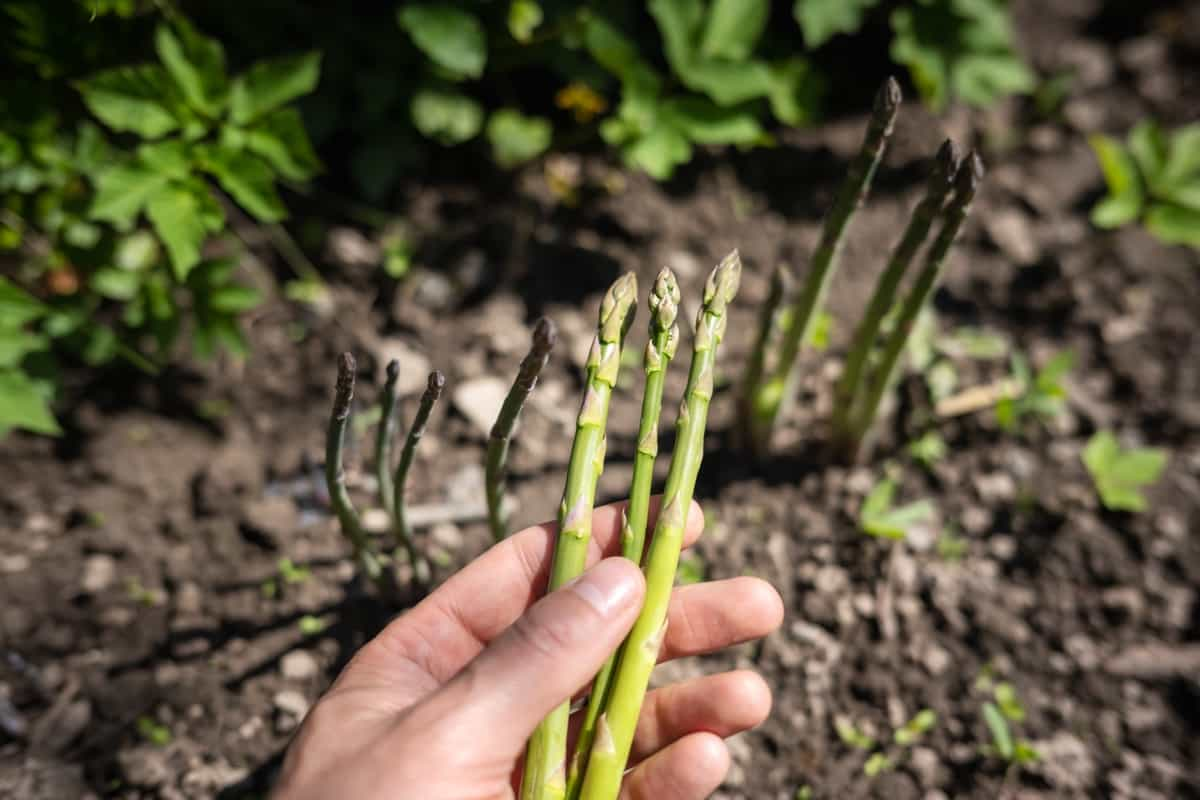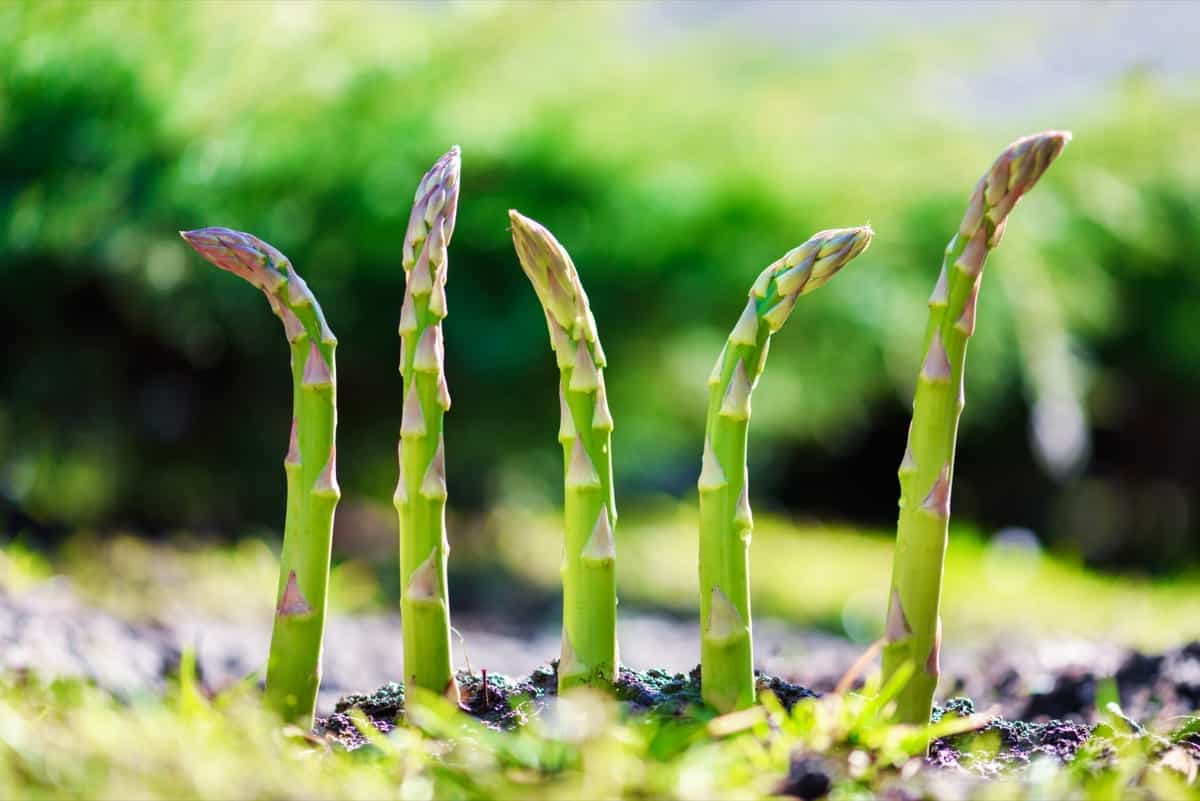Scientifically known as Asparagus officinalis, this spring vegetable belongs to the Asparagaceae family. Quality seeds ensure a higher success rate in germination, leading to healthy and robust plants in your garden. This fascinating process allows you to grow your delicious Asparagus plants right at home.

Selecting Quality Asparagus Seeds: Key Considerations
Look for reputable seed suppliers known for their high-quality products. This will ensure that you start with the best possible foundation for your Asparagus garden. Another important factor is choosing the right variety of Asparagus seeds. Additionally, pay attention to the viability of the seeds and opt for fresh ones whenever possible. Proper storage is important to maintaining seed viability – store them in a cool place until you’re ready to plant.
Understanding Asparagus Seed Varieties
Selecting quality Asparagus seeds is crucial for successful germination. Various types of Asparagus seed varieties are available, each with unique flavor, color, and yield characteristics. Some popular varieties include Mary Washington, Purple Passion, and UC 157.
For those looking for a more unique flavor profile, Connover’s Colossal variety may be the perfect choice with its tender spears and excellent texture. Asparagus enthusiasts also have the option of exploring hybrid varieties like Jersey Knight or Jersey Giant, prized for their high productivity levels and adaptability to various climates.
Seed Viability and Storage Tips
Seed viability refers to their ability to sprout and grow into healthy plants. Proper storage is key to maintaining seed viability. Store your Asparagus seeds in a cool, dry place away from direct sunlight and moisture. Seeds should be stored in containers or sealed bags to prevent exposure to air and humidity. Fresh asparagus seeds are recommended for optimal germination rates. By following these storage tips, you can preserve the viability of your Asparagus seeds and increase the chances of a successful germination process.
Preparing the Germination Environment: Soil and Containers
Start by selecting a well-draining potting mix rich in organic matter. Asparagus plants prefer slightly acidic soils with a pH between 6.0 and 7.0. Select pots or containers deep enough to accommodate the long roots of mature Asparagus plants.
In case you missed it: Homemade Fertilizers for Asparagus: DIY Organic Fertilizers

Make sure the containers have drainage holes at the container bottom to prevent waterlogging, which can lead to root rot. Before sowing your seeds, moisten the soil thoroughly, but do not make it soggy. Remember, providing the right germination environment sets the foundation for healthy growth and robust Asparagus plants in your garden.
Sowing Asparagus Seeds: Depth and Spacing Guidelines
When sowing Asparagus seeds, the depth at which you plant them is crucial for successful germination. As a general rule of thumb, sow the Asparagus seeds 1/2 inch deep in the soil. This will ensure that they are covered but not buried too deeply. Spacing guidelines are equally important to consider when planting Asparagus seeds. Leave approximately 12-18 inches of space between each seed to allow ample room for growth and development. Proper spacing will prevent overcrowding, which can hinder the plant’s ability to thrive.
Germination Conditions: Temperature and Moisture Requirements
It is crucial to provide the right temperature and moisture conditions to ensure the successful germination of Asparagus seeds. Asparagus seeds thrive in temperatures ranging from 21 °C to 29°C, which mimics their natural habitat. Consistent warmth encourages quicker germination rates. Maintaining proper moisture levels is equally important. Asparagus seeds need consistently moist soil but not waterlogged.
Overwatering can lead to rotting, while underwatering can hinder germination. A good rule of thumb is to keep the soil moist throughout the germination process. Using a bottle or mister can help regulate moisture levels without disrupting the delicate seeds. Covering the pots with a wrap or a humidity dome can also help retain moisture and create a mini greenhouse for optimal germination conditions.
Providing Adequate Light for Asparagus Seedlings
When it comes to providing adequate light for your Asparagus seedlings, remember that these delicate plants thrive in bright, indirect sunlight. Place seedlings near a window where they can receive natural light without being exposed to harsh direct sunlight that may scorch their fragile leaves.
If you’re using artificial lighting, opt for fluorescent grow lights positioned about 2-4 inches above the seedlings. Keep the lights on for about 14-16 hours a day to mimic the intensity and duration of natural daylight. This will ensure healthy growth and prevent leggy, weak stems. Asparagus seedlings are particularly sensitive to inadequate or inconsistent lighting, which can result in stunted growth or pale leaves – so keep a close eye on their development.
In case you missed it: How to Grow and Care for Yardlong Beans/Asparagus Beans From Seed

Managing Common Germination Challenges
One challenge that growers often face is inconsistent moisture levels, which can hinder seed germination. To combat this issue, make sure to water your seeds consistently but avoid overwatering, which can lead to rot. Another common challenge is poor soil quality or improper pH levels. Ensuring that your soil is well-draining and slightly acidic will help create the optimal environment for successful germination. It’s important to provide a stable and warm environment for your seeds to thrive.
Monitoring Seedling Growth: Signs of Successful Germination
Once you have sown your Asparagus seeds and provided them with optimal growing conditions, it’s time to monitor the seedling growth. Watch the trays or containers where you planted the seeds for any signs of activity. Tiny shoots pushing through the soil surface will indicate successful germination.
As the seedlings continue to grow, you may notice their leaves unfurling and developing into distinct fern-like structures characteristic of Asparagus plants. Regularly check for any signs of discoloration, wilting, or stunted growth among the seedlings, as these could indicate issues such as nutrient deficiencies or overwatering. Healthy seedlings should exhibit vibrant green coloration and sturdy stems.
Transplanting Asparagus Seedlings into the Garden
Once your seedlings have grown strong and healthy, it’s time to give them a permanent home in the soil. For optimal growth, select a sunny place in your garden with well-draining soil. Before transplanting seedlings, make sure to harden them off by exposing them to outdoor conditions. Dig holes in the prepared garden bed deep enough to accommodate each seedling’s root system. Place the Asparagus seedlings in the holes and backfill with soil, gently patting it down around the base.
In case you missed it: 20 Common Asparagus Plant Problems: How to Fix Them, Solutions, and Treatment

Water thoroughly after transplanting to help settle the soil around the roots and provide much-needed hydration for your young plants. Watch them as they acclimate to their new surroundings and flourish in your garden. With careful consideration of seed quality, proper germination conditions, and attentive care during the early stages of growth, you can successfully cultivate vibrant Asparagus plants in your garden.
- Where to Place Indoor Plants in Your Home
- How to Grow Tomatoes Organically at Home: A Comprehensive Guide
- Organic Gardening on a Budget: Low-Cost Methods and Materials
- Gongura Seed Germination and Planting Methods
- Cabbage Seed Germination and Selection
- Broccoli Seed Germination and Selection
- Asparagus Seed Germination and Variety Selection
- Seasonal Flower Gardening: Best Practices for Spring, Summer, Fall, and Winter
- How to Grow Hibiscus from Flower